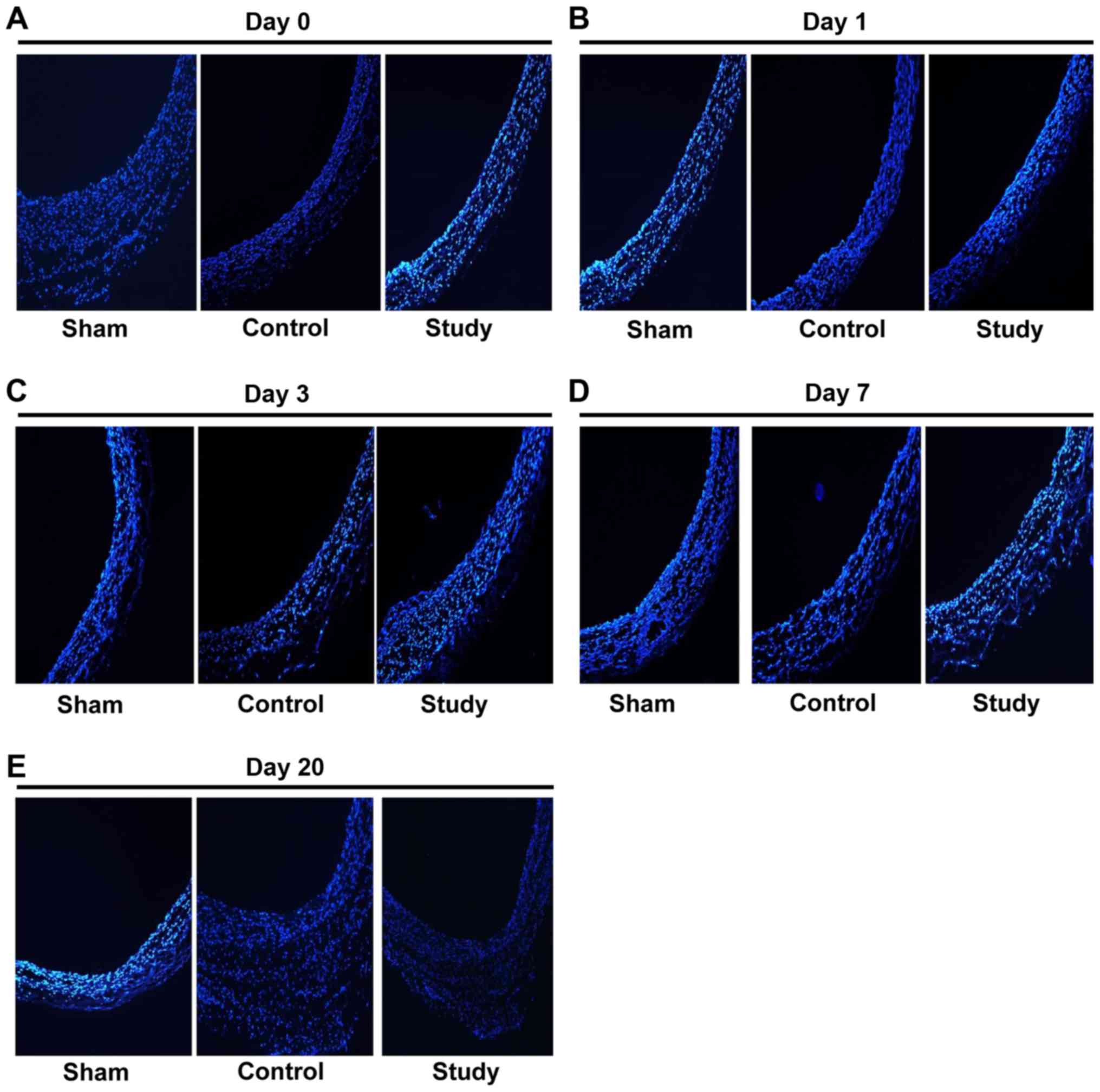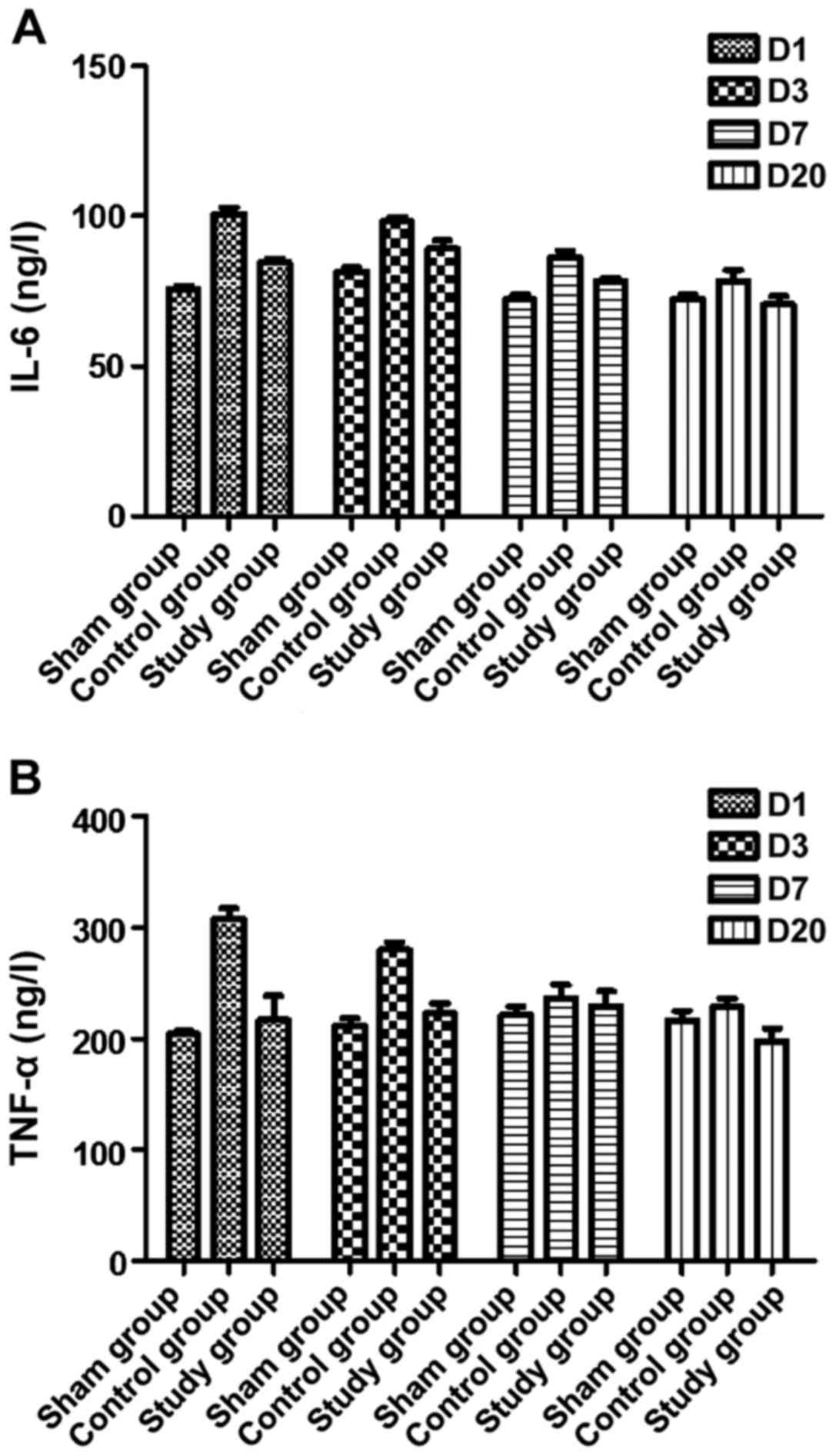Intravascular application of electrocautery in a rabbit model of abdominal aortic endarterectomy
- Authors:
- Published online on: May 17, 2017 https://doi.org/10.3892/etm.2017.4460
- Pages: 317-323
-
Copyright: © Wang et al. This is an open access article distributed under the terms of Creative Commons Attribution License.
Metrics: Total
Views: 0 (Spandidos Publications: | PMC Statistics: )
Total PDF Downloads: 0 (Spandidos Publications: | PMC Statistics: )
Abstract
Effective therapies for preventing perioperative complications such as thrombosis and inflammation after coronary endarterectomy (CE) are lacking. Electrocoagulation electrotomes have been routinely used in surgery for their cutting, clotting, and hemostatic properties. As strong flattening tools, their electrocautery function may prevent mechanical intimal-adventitial injury to arterial circulation and attenuate stenosis. The present study investigated the effects of intravascular application of electrocautery on ameliorating inflammation and thrombosis in a rabbit model of abdominal aortic endarterectomy. New Zealand rabbits were randomly divided into the sham, control (endarterectomy), and study (endarterectomy + electrocautery) groups with 10 in each group. Abdominal aortas were partially blocked and intima was removed. Electrocautery was performed with an electrocoagulation electrotome through the entire blocked vessel lumen. Vascular ultrasound parameters, molecular biological and histological characteristics of the abdominal aorta including vascular diameter, blood flow velocity, serum interleukin-6 (IL-6) and tumor necrosis factor-α (TNF-α) levels, and apoptosis rate of vascular endothelial cells (ECs) were evaluated postoperatively by vascular Doppler ultrasound, ELISA, real-time RT‑PCR, flow cytometry, and immunofluorescence at various time points. Compared with the endarterectomy + electrocautery group, the isolated endarterectomy group had significantly increased levels and gene expression of TNF-α and IL-6 (P<0.05), and rates of apoptosis of vascular ECs (P<0.05), with gradual vascular stenosis and decreased blood flow velocity. In conclusion, intravascular application of electrocautery has favorable short-term effects on the abdominal aorta and can reduce inflammation in a rabbit model of abdominal aorta endarterectomy. Long‑term anti-inflammatory and anti-thrombotic effects on arterial remodeling and the clinical value of electrocautery in CE remain to be determined.

















